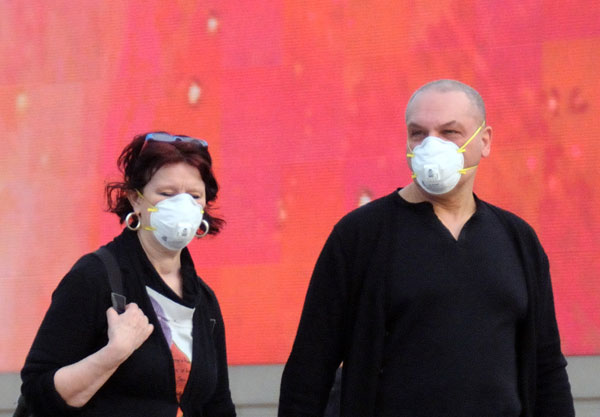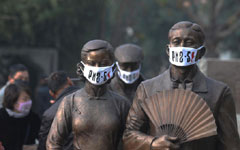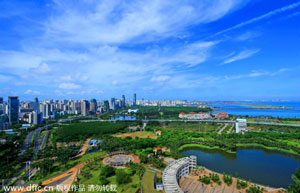Expats seek breath of fresh air outside big, smoggy cities
By Zhang Yuchen (China Daily) Updated: 2014-04-11 06:32
|
 |
|
Foreign visitors in Beijing on March 25, when the city issued a yellow alert. WEN BAO / FOR CHINA DAILY |
Before moving to Dali, Pym lived in Shanghai for five years. "I loved living in cities when I was in my 20s, but as I got older (he's now 40) my tastes changed. I like living in a place where I can go for a walk in the woods five minutes from my house," said Pym, who studied Chinese at Leeds University in the UK.
On Sept 13, the Geneva-based International Organization for Migration released the World Migration Report 2013, which stated that there were more than 680,000 foreigners living in China in 2011, a rise of 35 percent from 10 years before.
Both Beijing and Shanghai have resident expat populations of about 100,000.
|
 |
|
 |
Many expats who leave Beijing to relocate in China opt to move to coastal cities, such as Xiamen in Fujian province or Shenzhen in Guangdong, which are bustling regional centers, but have fewer environmental problems than the major inland centers, according to a report by the Ministry of Environmental Protection.
Smaller, second-tier cities, such as Changsha in Hunan province, which has an expat community of about 2,000, and the southwestern metropolis of Chongqing, which plays host to about 6,000 foreigners, gained few mentions in the report, even though life in these places can be colorful and vibrant.
Tom Strand, a UK native who lives in the Shapingba district of Chongqing, said he hadn't heard of any new expat arrivals who had fled Beijing or Shanghai specifically because of the air pollution. The 20-something, who is opening an agency to sell and distribute British beers, regularly travels around China on business.
The Ministry of Environmental Protection recently released a list detailing the air quality in 74 cities across China in 2013. For the entire year, only three cities - Haikou in Hainan province, Lhasa in the Tibet autonomous region, and Zhoushan in Zhejiang province - met the standards set for PM 2.5 and ozone set by the State Council in 2012.
The revised standards consider the safe level for PM2.5 - particularly harmful airborne pollutants smaller than 2.5 micrometers, which can penetrate the lungs and enter the bloodstream - to be 35 micrograms per cubic meter.
In contrast, the average PM 2.5 reading for Beijing in 2013 was 89.5 mcg per cu m, according to a media release from the Beijing Municipal Environmental Protection Bureau.
|
 |
 |
| China's top 10 richest cities |
- China 'incredibly innovative' in many areas: Apple CEO
- City official: Guangzhou further committed to opening-up
- Jack Ma: Globalization backed by technology will cut inequality
- HNA confirms interest in ASEAN's infrastructure investment
- Comments on Xi's letter to 2017 Fortune Global Forum
- China to create more opportunities for the world: Xi
- US tax cuts impact on China two-sided: economists
- Chinese enterprises job fair to be held in Sri Lanka

















